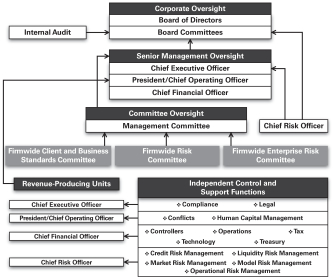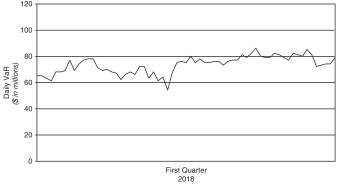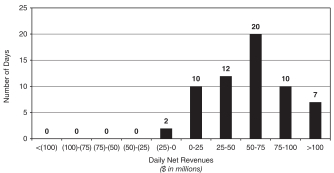THE GOLDMAN SACHS GROUP, INC. AND SUBSIDIARIES
Operating Environment. During the first quarter of 2018, industry-wide announced and completed mergers and acquisitions transactions declined compared with the fourth quarter of 2017.
In underwriting, the environment was mixed, but remained relatively favorable. Debt underwriting benefited from a slight increase in industry-wide transactions compared with the fourth quarter of 2017 and continued strength in acquisition-related financings.
Equity underwriting was impacted by volatility in the global equity markets as industry-wide equity underwriting transactions declined compared with the fourth quarter of 2017.
In the future, if industry-wide activity levels in mergers and acquisitions or equity underwriting continue to decline or if industry-wide activity levels in debt underwriting decline, net revenues in Investment Banking would likely be negatively impacted.
Three Months Ended March 2018 versus March 2017. Net revenues in Investment Banking were $1.79 billion for the first quarter of 2018, 5% higher than the first quarter of 2017.
Net revenues in Financial Advisory were $586 million, 22% lower than the first quarter of 2017, reflecting a decrease in industry-wide completed mergers and acquisitions transactions.
Net revenues in Underwriting were $1.21 billion, 27% higher than the first quarter of 2017, due to significantly higher net revenues in debt underwriting, reflecting higher net revenues from investment-grade, leveraged finance and asset-backed activity, and higher net revenues in equity underwriting, primarily due to higher net revenues from initial public offerings.
Operating expenses were $1.01 billion for the first quarter of 2018, 4% higher than the first quarter of 2017, due to the impact of the new revenue recognition standard. Pre-tax earnings were $783 million in the first quarter of 2018, 8% higher than the first quarter of 2017. See Note 3 to the condensed consolidated financial statements for further information about ASU No. 2014-09, “Revenue from Contracts with Customers (Topic 606).”
As of March 2018, our investment banking transaction backlog increased compared with December 2017, due to significantly higher estimated net revenues from potential advisory transactions, principally related to mergers and acquisitions. This increase was partially offset by lower estimated net revenues from potential debt underwriting transactions, primarily related to investment-grade and leveraged finance transactions, and slightly lower net revenues from potential equity underwriting transactions.
Our investment banking transaction backlog represents an estimate of our future net revenues from investment banking transactions where we believe that future revenue realization is more likely than not. We believe changes in our investment banking transaction backlog may be a useful indicator of client activity levels which, over the long term, impact our net revenues. However, the time frame for completion and corresponding revenue recognition of transactions in our backlog varies based on the nature of the assignment, as certain transactions may remain in our backlog for longer periods of time and others may enter and leave within the same reporting period. In addition, our transaction backlog is subject to certain limitations, such as assumptions about the likelihood that individual client transactions will occur in the future. Transactions may be cancelled or modified, and transactions not included in the estimate may also occur.
Institutional Client Services
Our Institutional Client Services segment consists of:
FICC Client Execution.Includes client execution activities related to making markets in both cash and derivative instruments for interest rate products, credit products, mortgages, currencies and commodities.
| • | | Interest Rate Products. Government bonds (including inflation-linked securities) across maturities, other government-backed securities, repurchase agreements, and interest rate swaps, options and other derivatives. |
| • | | Credit Products. Investment-grade corporate securities, high-yield securities, credit derivatives, exchange-traded funds, bank and bridge loans, municipal securities, emerging market and distressed debt, and trade claims. |
| • | | Mortgages. Commercial mortgage-related securities, loans and derivatives, residential mortgage-related securities, loans and derivatives (including U.S. government agency-issued collateralized mortgage obligations and other securities and loans), and other asset-backed securities, loans and derivatives. |
| • | | Currencies.Currency options, spot/forwards and other derivatives onG-10 currencies and emerging-market products. |
| • | | Commodities. Commodity derivatives and, to a lesser extent, physical commodities, involving crude oil and petroleum products, natural gas, base, precious and other metals, electricity, coal, agricultural and other commodity products. |


